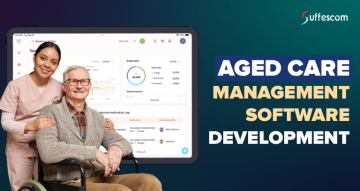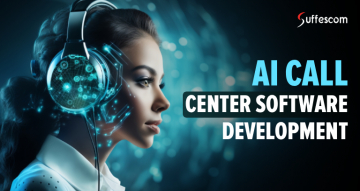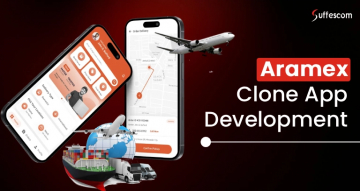AI Powered Horse Racing Handicapping Assistant Development

The horse racing industry is changing rapidly. This is due to the use of better data tools and smarter decision-making. Meanwhile, in traditional betting, people had to visit racing tracks and betting shops, which required a significant amount of time and effort. They're being replaced by AI horse racing handicapping solutions, which enable automated systems to process massive volumes of data in real-time.
This is a new concept that is capturing the attention of millions of users. Additionally, it is a golden chance for businesses to invest their resources in developing a horse racing web application. Therefore, they need to be aware of essential details such as features, application development steps, and costs. If you are focusing on multiple platforms, such as web and mobile, then the above aspects may vary accordingly. It's not just about rapid odds-setting and risk management anymore; you need robust engagement tools to attract and retain bettors, or you'll get left behind. This blog examines how artificial intelligence is transforming horse racing handicapping and why enterprises should take note.
Note - This Post is only for App and Software Development
We are an IT company, offering casino or gambling app and software development services only.
What is Handicapping in Horse Racing?
Handicapping means guessing the best available horse to bet. It is based on factors such as past performances, speed, trainer, and track conditions. For casual fans, it's part of the fun. But for B2B businesses in the horse racing world, it's serious work. Betting platforms use handicapping to set odds and manage risk. Syndicates rely on it to decide which horses to invest in. Racetracks use it to understand race quality. Data providers build entire services around delivering handicapping insights. The better your predictions, the more value you can offer, whether that means keeping users engaged, setting smarter odds, or building better tools for your partners.
Build AI Powered Horse Racing Handicapping Platform Today
Traditional vs. AI-Powered Handicapping
| Challenge | Traditional Handicapping | AI-Powered Handicapping |
| Data Overload | Relies heavily on manual analysis; difficult to process large volumes of data quickly. | Processes massive datasets in real-time using machine learning and automation. |
| Real-Time Adjustments | Static models or spreadsheets lack adaptability to live events or last-minute changes. | Continuously updates predictions based on real-time inputs like weather, jockey changes, etc. |
| Consistency of Analysis | Subjective outcomes vary widely based on individual handicappers' methods or preferences. | Offers standardized, repeatable predictions trained on consistent logic and data patterns. |
| Scalability | Difficult to scale due to reliance on individual expertise and time-consuming processes. | Fully scalable; supports hundreds of races and data points simultaneously. |
| Risk Management | Limited predictive capacity for risk; reactive approach to losses | Proactive risk forecasting based on historical patterns and live performance indicators. |
Key Features of an AI Horse Racing Handicapping Platform
To compete in today's market, your handicapping platform needs more than just race data.
1. AI Prediction Engine
This is the brain of the system. It utilizes machine learning models trained on past race outcomes, track records, jockey-trainer combinations, and other relevant factors. This core engine forms the backbone of AI horse racing predictor tools.
- Beyer speed figures
- Running styles
- Class drops or jumps
- Track bias
- Weather and real-time scratches
2. Live Odds Integration
The platform must be able to ingest live betting odds from exchanges or sportsbooks in real-time. This allows:
- Real-time market comparison
- Dynamic prediction updates
- Detection of unusual betting activity
3. Betting Strategy Modules
This adds serious value for experienced bettors. Allow users to explore strategies and test bets like:
- Box bet horse racing (selecting multiple horses in different combinations)
- Combo bet structures
- Daily double horse bet suggestions
Wheel betting systems (use checks and balance rules before placing bets)
4. User Dashboards
Clear, simple interfaces help users make faster decisions. Visual dashboards should show:
- AI picks and win probabilities
- Suggested bets
- Race previews with contextual stats
5. Customizable APIs
This is crucial for AI horse racing handicappers' solutions targeting platform partnerships. To monetize across B2B channels, provide:
- Prediction data APIs
- Embedded widgets for sportsbooks
- SDKs for developers
6. Alerts and Notifications
Keep users informed with real-time updates:
- Horse scratches
- Track condition changes
- Odds shifts
- Breaking news from racing feeds
Business Benefits of Building an AI-Powered Platform
Using AI for horse race predictions isn't just about better guesses. It also boosts platform results, keeps customers happy, and grows profits over time. Below are key business benefits:
Improved User Engagement
Platforms using AI-driven betting prediction tools report 3–4x higher repeat user rates. With more accurate picks, dynamic insights, and real-time updates, bettors stay engaged longer and are more likely to return for future races..
Enhanced Risk Management for Operators
AI helps create better-balanced books by modeling outcomes more precisely. By understanding probabilities with greater accuracy, sportsbooks and operators can minimize exposure, adjust odds dynamically, and improve margin management.
Personalized Betting Experience
AI systems learn from each user's behavior, such as bet types, wager sizes, favorite tracks, and timing preferences, to offer tailored recommendations and targeted promotions, increasing satisfaction and conversion.
Diversified Revenue Channels
Platforms can monetize AI capabilities beyond betting:
- Subscription-based predictive dashboards
- API licensing to affiliates or partners
- White-labeled tools for syndicates and external platforms
Operational Efficiency & Scalability
AI significantly reduces manual workloads by automating odds modeling, race analysis, and trend detection. This allows platforms to scale operations across thousands of races per week with minimal human intervention.
Competitive Differentiation
In a saturated betting market, AI provides a clear edge. Platforms offering intelligent insights stand out from competitors, leading to higher brand loyalty, increased referrals, and long-term customer retention.
Real-Time Market Adaptability
AI models can adapt to live track conditions, last-minute jockey changes, and public betting trends, allowing for more responsive and timely odds updates—something static systems cannot do efficiently.
Strategic Data Insights
AI doesn't just process data — it generates valuable insights on bettor behavior, race patterns, and profitability trends. These analytics can guide marketing, product development, and risk policies.
Lower Customer Acquisition Costs (CAC)
More precise user targeting and personalized engagement reduce churn and improve the ROI of customer acquisition efforts through AI-driven segmentation and messaging.
AI Integrations Implemented in AI Assistant Development For Horse Racing Game

Predictive Analytics Engine
The core of the AI sports betting app assistant lies in its predictive analytics. It utilizes data such as horse statistics, jockey information, and weather to make more informed race predictions using machine learning.
Natural Language Processing (NLP) Module
To make the app easy and fun to use, the assistant uses NLP to understand questions. It lets users ask things in simple, natural language. Whether it's "Who might win today?" or "What's a trifecta bet?”, the AI gives clear, helpful answers.
Computer Vision for Race Simulation
To enhance the visual realism of simulated races, computer vision algorithms are integrated to animate horse movements, crowd reactions, and race dynamics based on real-time predictions.
Reinforcement Learning for Game Strategy
Reinforcement learning (RL) allows virtual agents, like jockeys or bettors within the game, to learn from experience. By rewarding or penalizing actions such as choosing specific race strategies or bet types, the AI models gradually learn optimal behaviors.
Recommendation Systems
The white label sports betting app doesn't just generate arbitrary suggestions—it actively analyzes user preferences and behavioral patterns to deliver targeted recommendations. The underlying recommendation engine leverages sophisticated algorithms, outperforming basic heuristic-based systems commonly seen in less advanced environments.
Sentiment Analysis from News & Social Feeds
The assistant aggregates and parses information from diverse sources—news platforms, blogs, and social feeds like Twitter—to extract actionable sentiment data. Users receive more than just conventional statistics: the system synthesizes prevailing market sentiment, highlighting trends, anomalies, and crowd psychology, such as sudden surges in support or skepticism toward specific outcomes.
Voice-Enabled Virtual Assistant
This system enables natural language interaction, offering real-time vocal guidance. The assistant demystifies complex betting terminology, translating jargon into accessible language. This functionality is supported by advanced speech recognition technology and natural language processing (NLP) models, ensuring seamless and context-aware communication.
Real-Time Decision Support System
Odds and market changes happen fast, sometimes in seconds. The assistant watches these shifts and sends instant alerts and insights. Users get quick updates to make smart, timely decisions. This helps them identify new opportunities or avoid risks in a fast-paced environment.
Revenue Models for an AI Horse Racing Handicapper Platform
1. Subscription Tiers
This model encourages user onboarding while converting serious bettors into paying subscribers. Introduce a tiered pricing structure that scales with user needs and betting experience:
- Free Tier: Access to basic AI-generated picks and limited race previews.
- Premium Tier(s): Paid plans unlock:
- High-confidence picks with probability metrics.
- Daily strategy modules tailored to user preferences
- Real-time updates and race-day insights
2. Pay-Per-Pick Model
Allow users to purchase AI-powered predictions for specific high-profile races:
- One-Time Picks: Users pay a flat fee for single-race predictions.
- Dynamic Pricing: Adjust cost based on race prestige, betting volume, and AI confidence score.
- Ideal for casual bettors not ready to commit to a full subscription.
3. Freemium with Upsells
Offer foundational tools for free and upsell advanced features:
- Free Picks: Basic daily picks to build user trust and engagement.
- Premium Add-ons (upsells):
Box bet breakdowns for exotic bets
- Daily double and trifecta betting strategies
- AI-backed parlay or combo modules
- In-app purchases for one-time or recurring tools.
4. Data Licensing
Monetize proprietary AI predictions by offering access via API:
- License to:
- Bookmakers seeking an edge on odds-making
- Media outlets covering racing analytics
- Racing syndicates and betting groups
- Provide scalable plans based on usage, data volume, and features accessed.
5. Affiliate Integrations
Partner with sportsbooks and racing platforms to earn affiliate commissions:
- Embedded Widgets/Plugins: Let users place bets directly through your platform interface.
- Trackable Links: Earn a commission for every user who places a bet or signs up through your referral.
- Boosts passive income while enhancing user experience with seamless betting options.
Cost of AI Horse Racing Betting Predictions Tool Development
AI powered Horse racing handicapping software with basic features is on the lower end of the spectrum. Advanced AI horse racing assistant tool development with multiple data feeds and cross-platform apps costs more. Costs range from $10,000 to $25,000+ based on:
- Custom AI model development
- Real-time integrations
- Cloud infrastructure
- Mobile/web cross-platform support
- UI/UX design and dashboards
- API and SDK packaging
AI Horse Racing Betting Predictions Tool Development Process

1. Requirement Gathering
The team digs into the requirements, such as business targets, user pain points, and the stuff that'll move the needle. We're hunting for high-value B2B cases - think sportsbooks, affiliate integrations, API consumers. The platform's boundaries get mapped out, user roles are defined (bettors, data geeks, API folks), and we sort out the cash flows: subscriptions, pay-per-pick, licensing. No guesswork, just sharp focus.
2. Data Sourcing
Here, we are accumulating everything: historical race outcomes, up-to-the-minute odds, weather shifts, jockey and horse metrics. If it could tip the scales on race day, we want it in. This data swamp? It's the backbone for all the history-based modeling and the split-second predictions.
3. Data Pre-processing
We run it through the wringer: fill in gaps, make ethnicity types consistent, normalize stats for jockeys and horses, sort out variables like track state and race class. By the end, we've got a lean, mean, machine-readable dataset, prepped and ready for model training without hiccups
4. Model Development
The data science team utilizes a tech stack that includes TensorFlow, PyTorch, Scikit-learn, and additional tools. Models are built and trained on extensive datasets of race data. The goal? Deliver sharp win probabilities, forecast odds shifts, and flag high-value picks—all grounded in stats and real-time data flow.
5. Evaluation & Testing
Every model has performance tests, precision, recall, the works. Statistical checks keep us honest. Additionally, we stress-test everything in simulated environments to ensure the models don't falter when things become hectic.
6. Frontend Development
Front-end engineers set up responsive interfaces using React.js or Vue.js, whichever is best suited for the project. For mobile? Flutter or React Native. The focus is on providing smooth, real-time insights, tailored recommendations, and an interface that feels snappy, regardless of the device. All the tech muscle works together so users get actionable information faster.
7. Backend & APIs
A robust backend is developed using Python or Node.js, supporting seamless communication between the models, frontend, and third-party services. RESTful APIs are implemented for prediction delivery, user authentication, race tracking, and payment operations. This modular API layer also enables easy integration for B2B partners.
8. Real-Time Infrastructure
To support live races and up-to-the-minute predictions, we integrate tools like Apache Kafka and Apache Airflow for real-time data ingestion and orchestration. ML models are hosted on scalable cloud infrastructure (AWS/GCP), enabling low-latency responses and ensuring uptime during peak betting windows.
9. Integration & Payments
We integrate secure payment gateways, such as FanDuel Prepaid Play+, Wire transfer, Venmo and crypto payment wallets, to handle user subscriptions, purchase transactions, and B2B licensing transactions. OAuth2 and JWT-based authentication mechanisms are implemented to ensure secure access for both end-users and enterprise clients.
Recommended Technologies for AI-Powered Horse Racing Handicappers
| Layer | Technologies/Tools |
| Backend | Python or Node.js - PostgreSQL or MongoDB - TensorFlow / PyTorch / Scikit-learn (for ML models) |
| Frontend | React.js or Vue.js (web) - Flutter or React Native (mobile) |
| Infrastructure | AWS / Google Cloud Platform / Microsoft Azure - Docker / Kubernetes - Apache Kafka / Apache Airflow (for data orchestration and streaming) |
| Integrations | Racing data APIs (e.g., Betfair, Racing.com) - Payment gateways (e.g., Stripe, Razorpay) - Authentication (OAuth2, JWT) |
Partner with Us to Power Your Betting Platform with AI
Conclusion
The future of horse racing lies in scalable intelligence. AI horse racing handicappers aren't just novelties - they're tools for more thoughtful engagement, better predictions, and higher revenues. Whether you're a sportsbook, racetrack, daily free AI sports predictions, or betting startup, now is the time to invest in AI-powered solutions for the horse racing industry. The ROI is strong, the demand is growing, and the tech is ready. If you're exploring AI horse racing predictor features or want to expand into AI horse racing betting predictions tool development, the opportunity is clear. Build a platform that doesn't just keep up with the market, but leads the market.
FAQs
Can this integrate into our sportsbook?
Yes. Through APIs or SDKs, the system can work inside web or mobile sportsbooks.
What's the accuracy of an AI Horse Racing Predictor?
It varies, but well-trained models can outperform traditional handicapping by 20–35%.
Is AI Horse Racing Assistant Tool Development legal?
Yes, if your fantasy sports app development includes local gambling regulations, compliance standards, and includes proper disclaimers.
What would be the cost of AI Horse Racing Handicappers Solutions?
The cost of AI horse racing handicappers development ranges from $10,000 to $25,000. However, this varies depending on the individual's actual requirements.
Where can I get a fully customized horse racing handicapping tool?
You can get a fully customized horse racing handicapping tool developed by Suffescom Solutions, a leading AI and blockchain app development company. We build tailored handicapping systems that analyze race data, track performance, jockey stats, and real-time odds using advanced algorithms. Our team ensures the platform aligns with your specific betting strategies and data sources for accurate, AI-powered predictions.
Which is the best company that provides a horse racing handicapper assistant?
Suffescom Solutions is among the best companies offering AI-driven horse racing handicapper assistants. We create intelligent assistants that help bettors and analysts make data-backed decisions through predictive analytics, machine learning, and real-time race tracking. Our solutions can be deployed as web apps, mobile apps, or integrated modules for existing betting systems.
From where can I integrate AI into a horse racing betting platform?
Our team implements predictive modeling, behavioral analytics, and custom recommendation engines to enhance user engagement and improve win probabilities. Whether you need AI for odds calculation, trend analysis, or user personalization — we provide end-to-end integration support for a smarter, automated betting experience.








